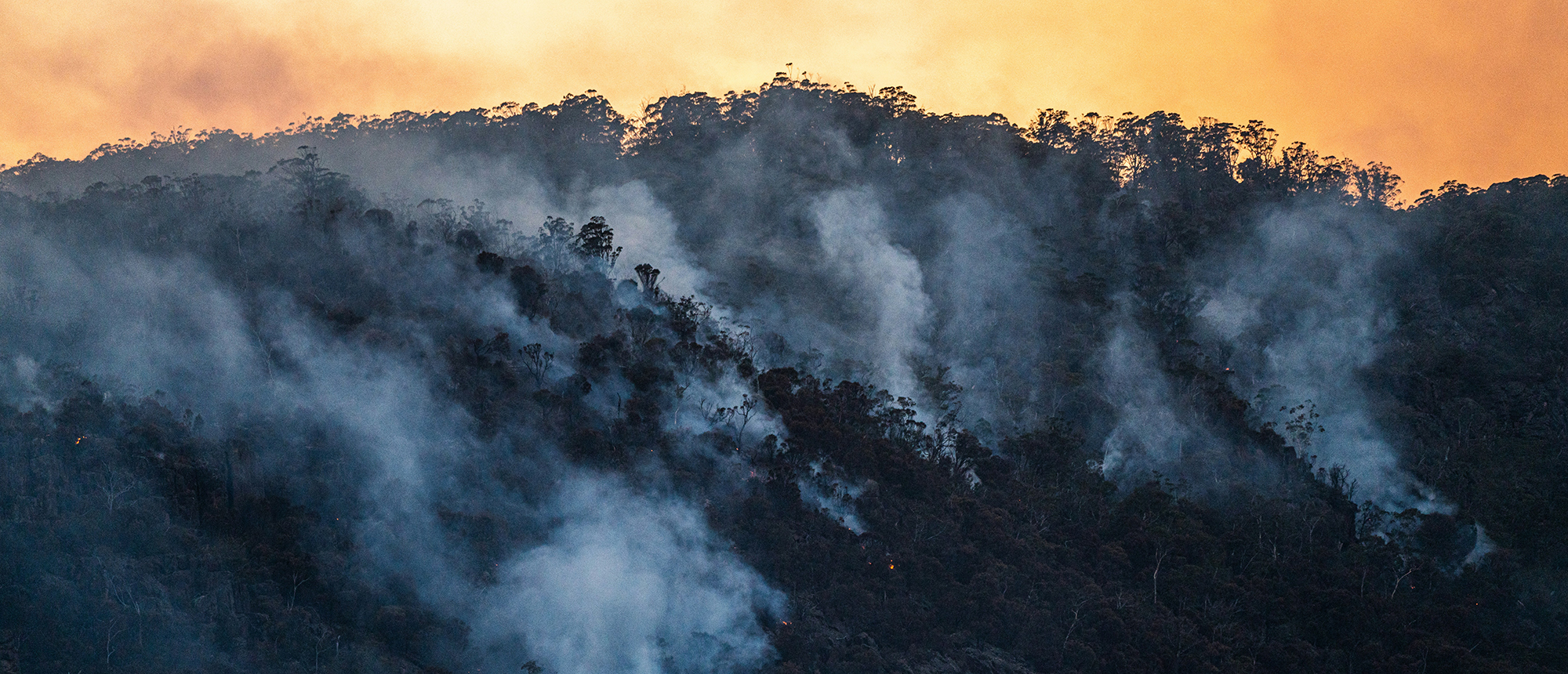
Climate Impact
Impacting Climate
The unique power of Telluride Science is its ability as an independent center to bring together global thought leaders to communicate, collaborate, and innovate to solve societal and planetary grand challenges. Many of our scientists are doing important work in a variety of areas to mitigate the impacts of climate change.
“Interdisciplinary collaboration is critical to finding solutions to our societal challenges. Telluride Science does this better and across a broader spectrum of science and technology than any other organization in the world. Its ability to accelerate the research of every scientist and
engineer who comes to Telluride Science makes it one of the most impactful and scalable investments in science and technology.”
– Vadim Backman, Northwestern University
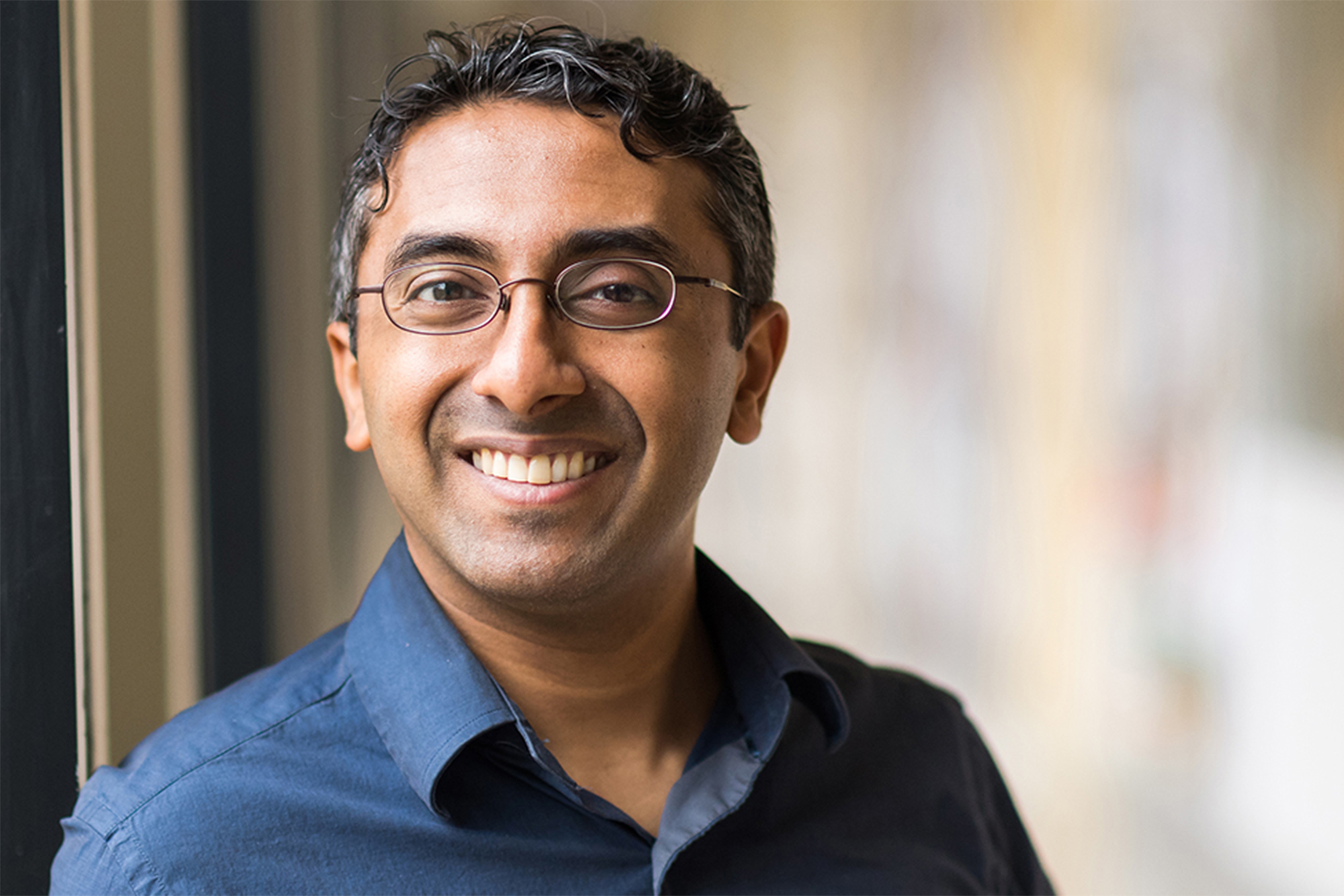
Carbon Sequestration
Yogesh Surendranath, Professor of Chemistry, Collaborator of the MIT Energy Initiative, MIT
As concentrations of carbon dioxide increase in the atmosphere, there are now efforts underway to try to actively remove it. This process is known as carbon dioxide storage or carbon sequestration. In 2013, USGS released the first-ever comprehensive national assessment of geologic carbon dioxide storage potential in sedimentary basins. According to this assessment, the United States could store up to 3,000 metric gigatons of carbon dioxide. Now, the USGS has published a comprehensive review of another type of geologic carbon storage, carbon mineralization (reference USGS). Yogi is optimistic about the progress his lab is making on the ability to catalyze these reactions so large-scale carbon mineralization can occur with limited energy and resource use.
Yogi attends the biennial Telluride Science workshop, Solar Solutions to Environmental Problems.
For the number of people that come to Telluride, the impact is extraordinarily outsized – that's what is so powerful about it. You don't need to convene everyone in the world to have a huge impact on science. You need to give leaders in the scientific community the opportunity to interact and really have deep in-depth conversations about their fields and about grand challenges, and that's what Telluride provides. – Yogesh Surendranath, MIT
Carbon Capture for Industrial Emissions
Susan Rempe, Distinguished Member of the Technical Staff, Sandia National Laboratories
Greenhouse gas (GHG) emissions from industry constitute 23% of global GHG emissions, mainly coming from the burning of fossil fuels for energy, as well as emissions from certain chemical reactions necessary to produce goods from raw materials (reference EPA). Susan is working on developing and commercializing carbon capture technology that uses a catalyst liquid membrane and enzymes to effectively separate CO2 from industrial emissions. The resulting CO2 is very pure and can be repurposed into jet fuel, industrial chemicals, carbonation for beverages, or even used as fuel to power the capture process.
Susan co-organizes Ions in Solution: Biology, Energy, and Environment and also attends Biophysics of Ion Channels and Interfacial Molecular and Electronic Structure and Dynamics.
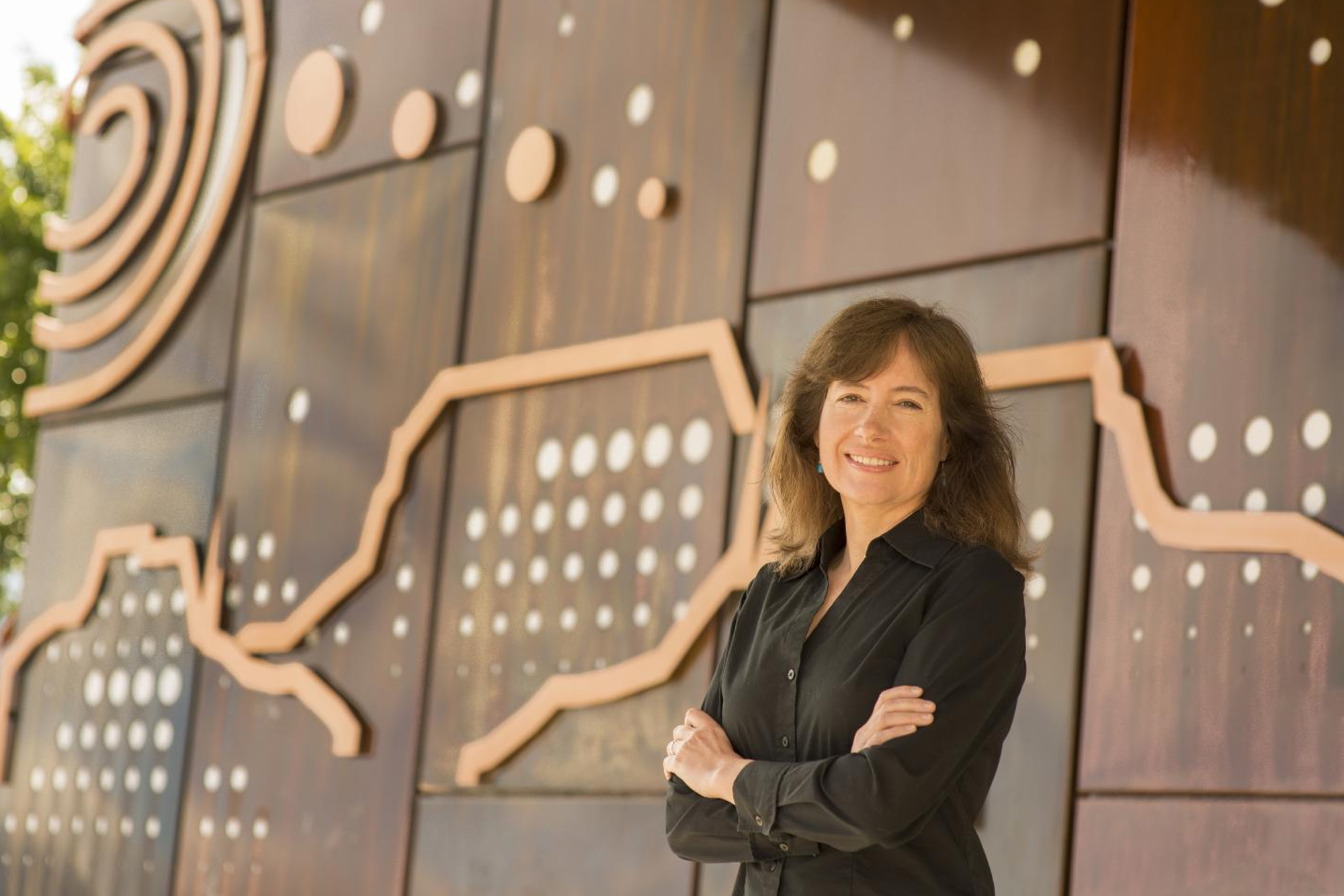
What makes Telluride Science so impactful is a combination of the small meeting size, which creates a safe environment for a real discussion, and the diversity of participants from different disciplines. The diversity of perspectives stimulates new ideas and new approaches that result in solutions to societal challenges. It’s truly unique and extraordinary. – Susan Rempe, Sandia National Laboratories
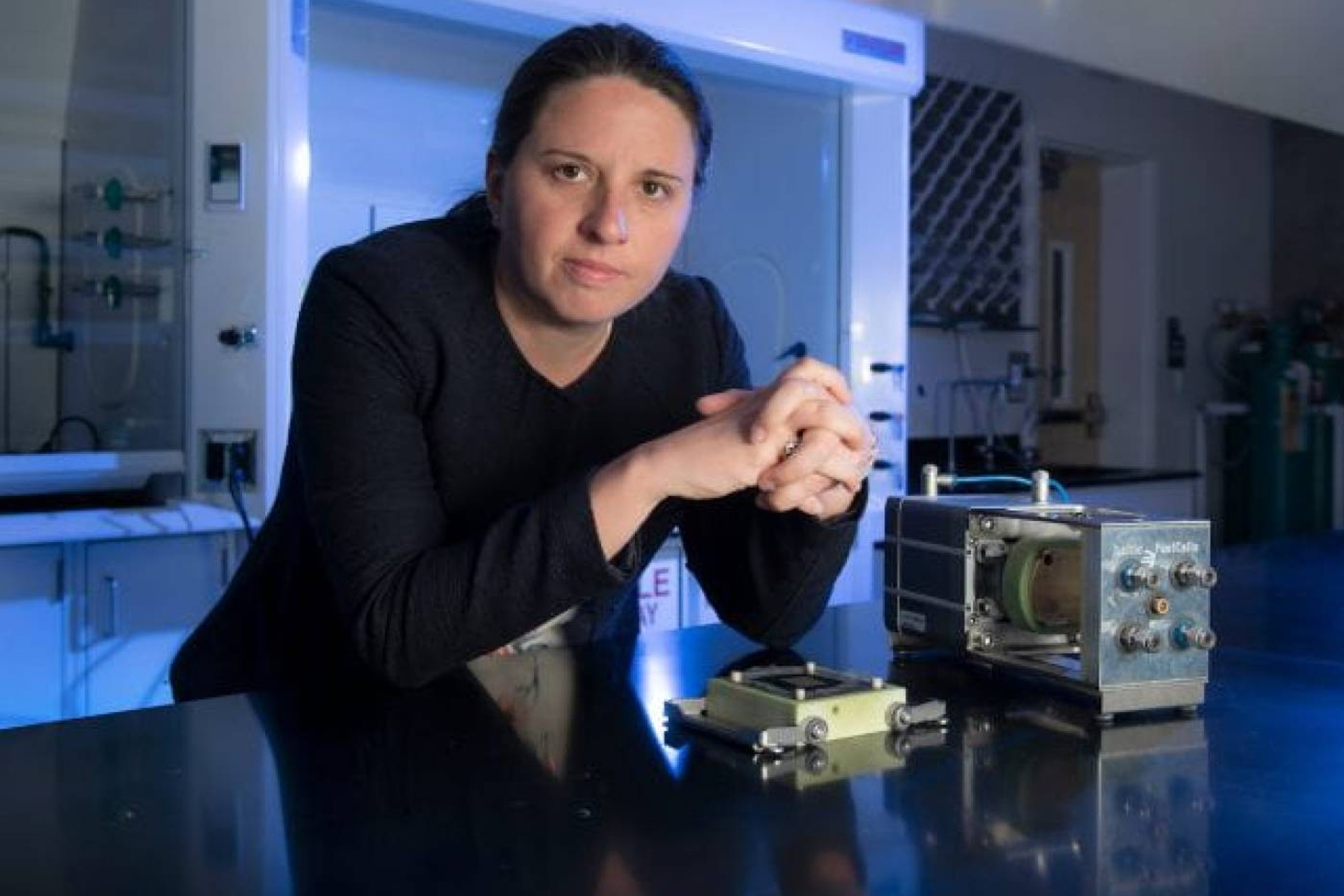
Decarbonization of Cement
Iryna Zenyuk, Associate Professor of Chemical and Biochemical Engineering, University of California, Irvine, and Associate Director of National Fuel Cell Research Center
Portland cement, used in concrete, is the most widely used man-made material. But it is also responsible for 5% of the global energy consumption and 8% of the anthropogenic CO2 emissions. In cement manufacturing, calcium oxide (CaO) is a major precursor to produce Portland cement. It currently is being produced via high-temperature, energy-intensive calcination of calcium carbonate (CaCO3).
Iryna, along with her colleague, Mo Li from UC Irvine, co-founded the Telluride Innovation Workshop, The Decarbonization of Cement. The purpose of this Telluride Innovation workshop is to bring academic, industrial, and national laboratory leaders together to brainstorm pathways to decarbonize the cement industry. The goal is to identify high-risk/high-reward technologies that have promise to reduce carbon intensity and increase the energy efficiency of the cement-making process. This workshop addresses methods that utilize novel electrochemical processes to produce cement precursors, electrified methods to generate heat for cement production or alternative CO2 storage methods.
Iryna has also attended the Telluride Science workshop, Interfacial Chemistry and Charge Transfer for Energy Storage and Conversion.
I’ve attended many Telluride Science workshops and I really value the interactive environment where scientists get to exchange ideas and build collaborations. – Iryna Zenyuk, UC Irvine
Plant Resiliency and Climate change
Lucia Strader, Professor of Biology, Duke University
Lucia attends the workshops, Plasticity in Biological Organization and Phase Separation in Biology and Disease, and is presently curating a new Telluride Science workshop on agriculture and climate change. Lucia Strader believes we have an urgent social responsibility to address climate change and knows that plants are an important modulator of the Earth’s climate. Plants are the primary source of food and energy. Lucia’s lab is focused on the influence of the plant hormones, auxin, and the plant’s responsive morphogenesis in the context of changing environmental factors. Auxin is a critical plant hormone, controlling both cell division and cell expansion and thereby orchestrating many developmental events and environmental responses.
Lucia also believes that open communication and collaboration are critical to innovating new solutions. “Pressing issues cannot be accomplished effectively by individual labs or individual disciplines,” says Lucia. She is determined to bring together and collaborate with scientists and farmers who are concerned about the impact of climate change on agriculture.
Lucia attends the workshops, Plasticity in Biological Organization and Phase Separation in Biology and Disease, and is presently curating a new Telluride Science workshop on agriculture and climate change.
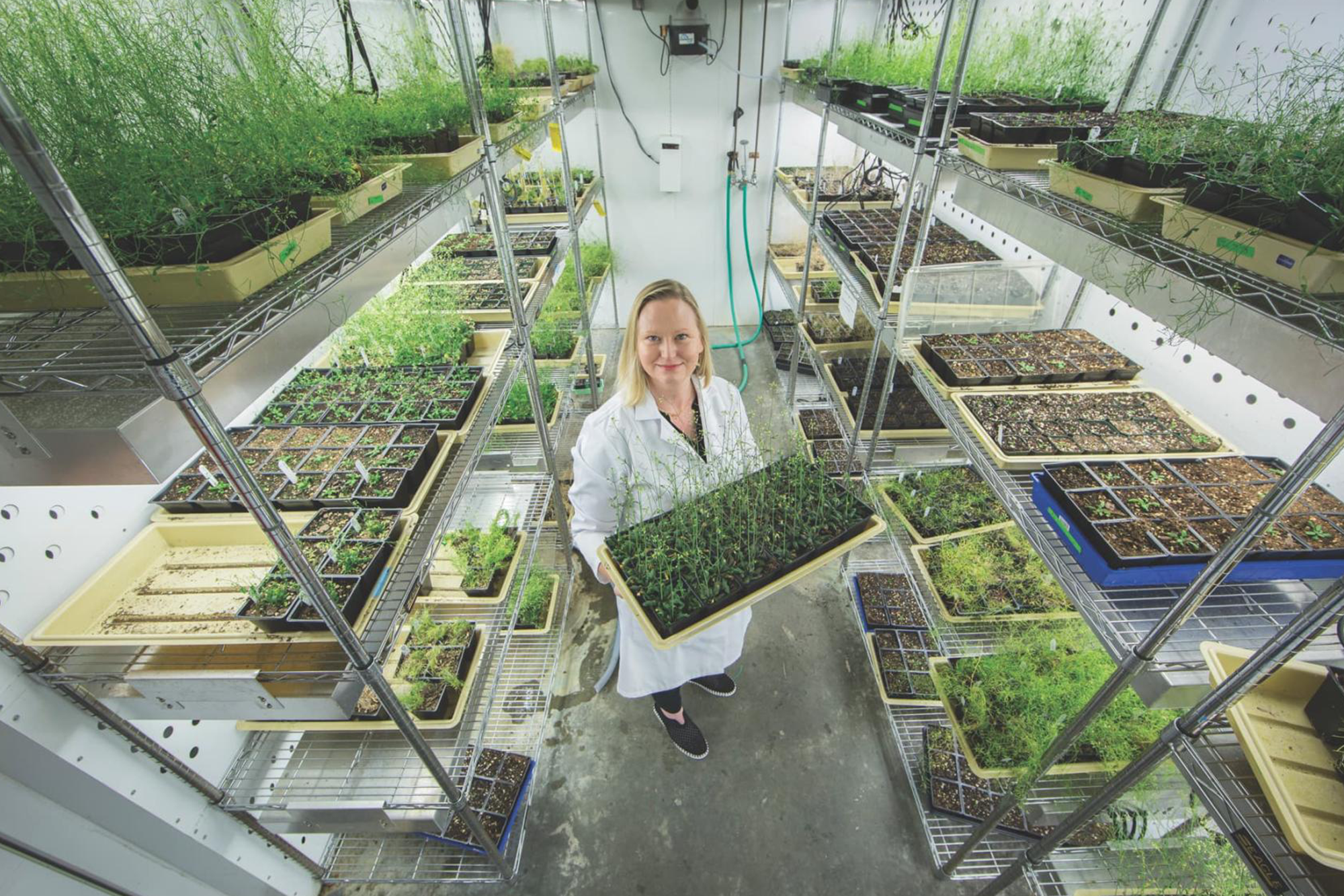
If we are going to effectively solve challenges like climate change, we need help from an organization like Telluride Science to stimulate the dialogue and collaboration among scientists and engineers who are not yet communicating and sharing ideas and knowledge. – Lucia Strader, Duke University
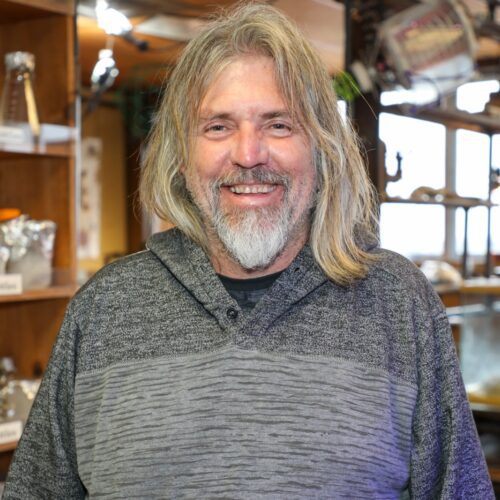
Coral Reef Regeneration
Forest Rohwer, Professor of Biology, Coastal Marine Institute, San Diego State University
Coral reefs are one of the most important ecosystems in the world. They support over a quarter of all known marine species, protect coastlines during storms, help local economies through fisheries and tourism, and even provide complex biological insights on treating human disease. Data from NASA and other institutions show that the global decline in coral reefs is mainly driven by climate change and other human actions, including pollution.
Forest, a marine microbial ecologist, sees a coral reef as a finely tuned community in which the microbes and viruses are major players. Using microbial ecology and thermogenic insights gained at Telluride Science, Forest’s group has been designing structures (“Arks”) and testing more than 500 different materials to promote the rebuilding of coral reefs. Three years of deployments are showing that the Arks are creating large fisheries and promoting coral health. Over the next year the team will be deploying two Arks in Puerto Rico and using them to build a mini reef as the first test of floating Ark to reef.
Forest co-organizes Calorimetry and Microbial Ecology and also attends Optimizing Thermodynamic Systems and Cystic Fibrosis: Ecology, Evolution, and Eradication.
The Telluride Science & Innovation Center is essential to developing the theory for coral reef restoration. Getting modelers together with experimentalists is the only way to make progress on these complex problems. – Forest Rohwer, San Diego State University
Battery Innovation for Grid Storage
Shirley Meng, Professor of Molecular Engineering, University of Chicago & Chief Scientist for Argonne Collaborative Center for Energy Storage Science, Argonne National Laboratory
Shirley is focused on helping the US transition to a resilient electrical grid with terawatt-scale energy storage for deep renewable energy penetration that can be economically viable to deploy. Shirley also made a major breakthrough in battery technology by building a solid-state battery with an anode made out of silicon, a material with 10 times the energy density as the graphite anodes used today. (reference UC Chicago News.)
Shirley attends the biennial Telluride Science workshop on Interfacial Chemistry and Charge Transfer for Energy Storage and Conversion. She is also the co-founder of the upcoming Telluride Innovation workshop series, Grid of the Future: Energy Storage on the Future Grid.
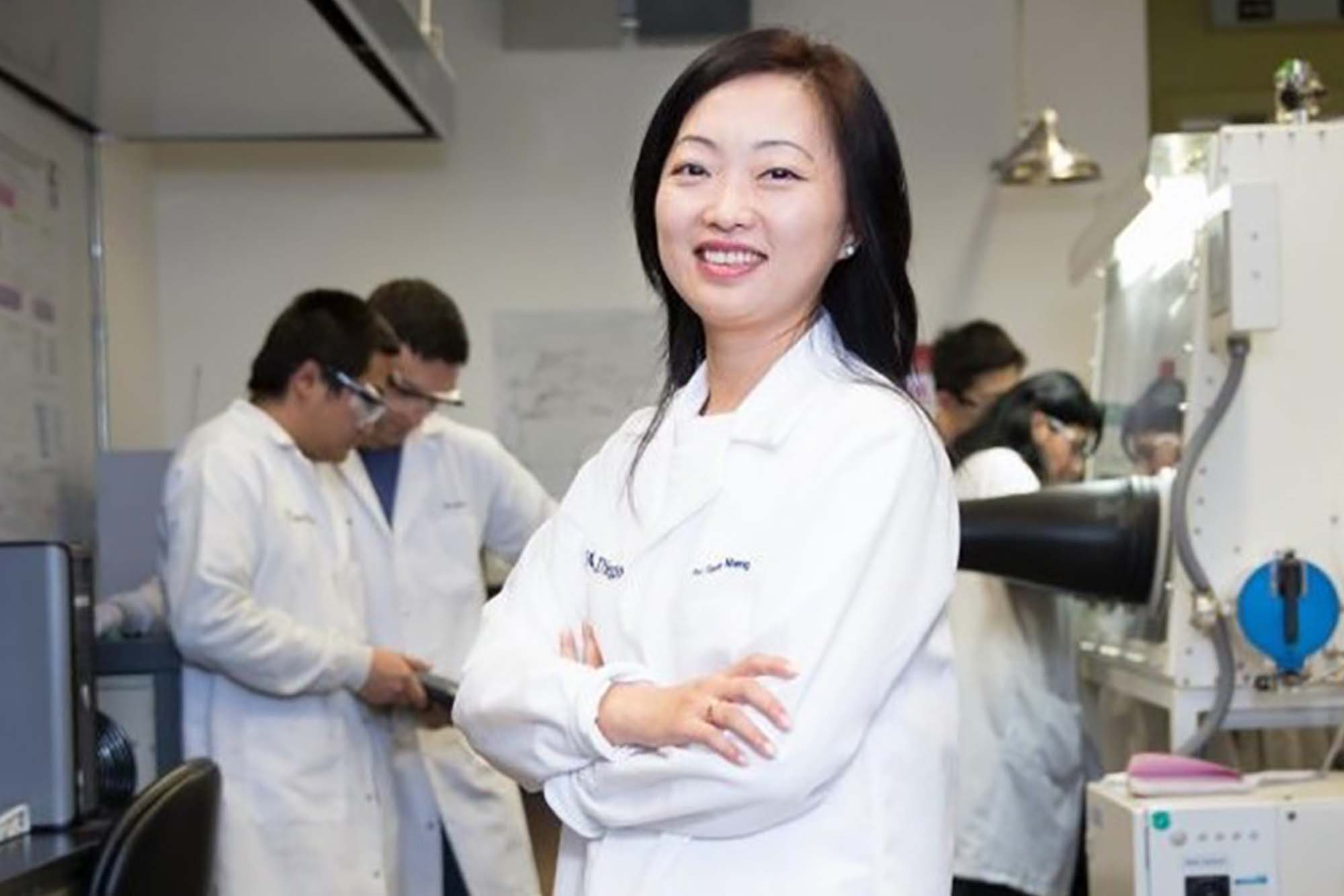
Telluride is an inspiring place and has always spurred innovation. The landscape has changed dramatically from the mining industry with the creation of the first AC power plant in Telluride. Now, thanks to Telluride Science, it is where breakthrough science happens. These innovations started more than 100 years ago and continue today. – Shirley Meng, University of Chicago & Argonne National Laboratory.

PHOTOVOLTAICS/SEMICONDUCTORS FOR RENEWABLE ENERGY SOLUTIONS
Natalie Stingelin,
Professor, Chair of the School of Material Science, Georgia Tech
Photovoltaics (PV) are more commonly known as solar panels. They generate power by using semiconducting materials
that absorb light energy and convert it into electrical energy. Developing new sustainable and affordable materials to better collect, generate, and transmit electricity from the sun is a key part of the global renewable energy generation strategy (reference energy.gov)
Natalie’s work focuses on gaining fundamental understanding of functional macromolecular materials (“functional” plastics) that underpin technologies
targeted at achieving climate resilience and realizing accelerated decarbonization. Examples include novel, semi-transparent energy harvesting systems; smart windows that control light- and heat- flow; and envelope technologies that help to dramatically reduce the overall need for active cooling/heating in buildings, agricultural greenhouses, and electric vehicles, while enabling better daylight access.
Natalie co-organizes and attends the following Telluride Science workshops: The Role of Assembly in Dictating the Functionality and Applications of Organic Semiconductors, Polymer Physics, Hierarchical Assembly and Function of Organic and Hybrid Materials, and Organic Bioelectronics: Tackling the Mixed Conduction Challenge.
I cannot count all the Telluride meetings I have attended. They are unique across all the conferences and workshops that are out there. The reason is that Telluride Science provides a platform where scientists have time to mingle, have the freedom to discuss, feel comfortable to agree and disagree. Telluride attendees are given the time to think, and then advance new theories, approaches, and models. So many ideas, indeed new views, have resulted from the Telluride workshops that I have attended. Each time I returned to my job refreshed with new motivation, invigorated and ready to conquer the next science problem. That’s why I try to return to Telluride once a year! . – Natalie Stingelin, Georgia Tech

Water
Seth Darling, Chief Science & Technology Officer Argonne National Laboratory, Advanced Energy Technologies Directorate, Director Advanced Material for Energy-Water Systems (AMEWS) Center Fellow, University of Chicago
Water and climate change are inextricably connected. Only 0.5% of water on Earth is usable and available as freshwater and climate change is dangerously affecting that supply. Over the past twenty years, terrestrial water storage, including soil moisture, snow, and ice, has dropped at a rate of 1 cm per year. This has major consequences on water security. Water quality is also affected by climate change, as higher water temperatures and more frequent floods and droughts exacerbate many forms of water pollution (reference United Nations).
Seth’s current work is focused on extracting valuable and strategically important resources from wastewater. Many of these materials will be essential to realize the clean energy transition in the coming years. As part of a National Science Foundation (NSF) initiative for the Great Lakes water- shed, the ability to extract waste in water could soon generate new clean energy development, job creation, and economic growth across the large watershed. The initiative will fund ($160M over 10 years) efforts to find new ways to recover clean water, nutrients, and materials for clean energy technologies from wastewater — all while removing dangerous chemicals (reference Argonne National Laboratory)
Seth has also been vocal and passionate about educating the public on the energy costs of water use. His TED talks have been widely viewed. It’s The End Of Water As We Know It, Invisible Water, The Hidden Virtual Water Market, Securing Our Shared Water Future Amidst Climate Disruption. Seth co-founded and attends the biennial Telluride Science workshop, Water: Grand Challenges for Molecular Science and Engineering.
The science of water crosses many traditional boundaries, drawing on chemistry, physics, materials science, and engineering to uncover its mysteries and to develop innovative solutions enabling reliable, safe, and plentiful water for all people. Telluride Science workshops provide an ideal forum for these disparate perspectives to come together, learn from each other, and spark those new ideas that can ultimately change the world – Seth Darling, University of Chicago & Argonne National Laboratory
Climate/cloud modeling
Graham Feingold, Program Lead, Clouds, Aerosol, & Climate, NOAA Chemical Sciences Laboratory
Graham is a research scientist at NOAA’s Chemical Laboratory in Boulder, Colorado. His interests lie in aerosol-cloud-precipitation interactions and implications for climate change. His focus is on process-level studies using high-resolution models and observations (aircraft and surface remote sensing) at the cloud scale (10s of meters to 10s of kms). Feingold was a lead author on the International Panel on Climate Change (IPCC) AR5 Chapter 7 (Clouds and Aerosols, reference NOAA). Graham attends the biennial workshop, Aerosols and Clouds: Connections from the Laboratory to the Field to the Globe.
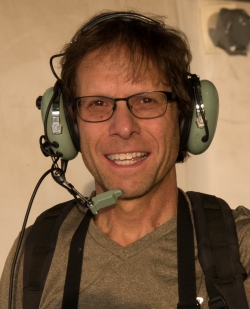
The Telluride Science & Innovation Center stands uniquely amongst the many workshops and conferences that compete for our attention. It gathers together small groups of scientists focused on specific science questions and provides a comfortable environment for grappling with ideas. The flow of information is slower, the engagement more meaningful, and the overall experience far more conducive to advancing science than other formats that I have experienced. – Graham Feingold, NOAA Chemical Sciences Laboratory

Battery Materials for Transportation
Donald Siegal, University of Texas, Austin
Electrochemical batteries are a critical component of decarbonizing the transportation industry, where it is projected that by 2035 half the cars on the road will be electric (reference UC Chicago News). For this to happen, battery technology must further develop to address current challenges like limited materials, battery life, recyclability, safety, and performance. Don is a computational materials scientist whose research targets the development of electrical energy storage materials and lightweight alloys (reference University of Texas). Don co-organizes and attends the biennial Telluride Science workshop on Interfacial Chemistry and Charge Transfer for Energy Storage and Conversion. He also co-founded and instructs the graduate-level summer school, the Telluride School on Electrochemical Storage. (Sponsored by Toyota)
Telluride Science workshops have been instrumental in helping me to identify new research directions and opportunities to collaborate. More so than at any other conference, Telluride Science workshops give participants the opportunity to dive deeply into the latest scientific developments, with abundant time to discuss — and debate! — with experts in the field. These interactions have been invaluable in helping my research ask the right questions and maximize its benefits to society. – Donald Siegal, University of Texas, Austin
HYDROGEN FUEL CELLS
Plamen Atanassov, Chancellor’s Professor, Department of Chemical & Biomolecular Engineering, UC Irvine Austin
https://meetings.telluridescience.org/meetings/workshop-details?wid=1170Clean hydrogen is part of the U.S. Department of Energy’s (DOE) strategy to address difficult-to-decarbonize sectors of the economy, including industrial applications, heavy transportation and shipping sector, and aspects of the US electrical grid (reference energy.gov).
Plamen’s materials for energy programs are focused on the development of novel electrocatalysts for hydrogen fuel cells and enabling technologies
for energy conversion and storage.
Currently, Plamen is engaged in several major DOE initiatives, helping to build California’s hydrogen hub. He is also a co-principal investigator with the Alliance for Renewable Clean Hydrogen Energy Systems (ARCHES), interfacing with hydrogen technology demonstrations and research efforts both regionally and nationwide.
Plamen co-organizes and attends the annual Telluride Science workshop on Platinum Group Metal and Platinum Group Metal-free Electrocatalysts: Catalyst/Ionomer Interactions.
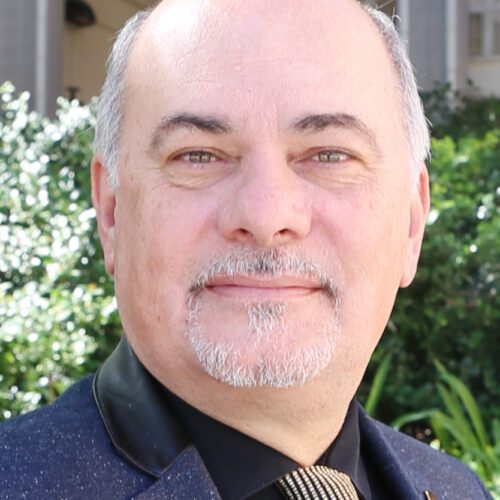
The wonderful combination of the coziness of a small gathering and the vastness of the sky over Telluride gives us the ability to think in different ways. I’m really thankful to Telluride Science for putting these workshops together for 40 years. It’s a tremendous accomplishment. The organization deserves to be recognized for the large impact that it has on pushing science and new developments forward. – Plamen Atannassov, UC Irvine

COMPUTING ENERGY CONSUMPTION
Jim Crutchfield, Distinguished Professor of Physics, University of California, Davis
Computer processing and cloud computing use a tremendous amount of energy, currently estimated to be roughly 2.5% of global greenhouse gas emissions, more than the aviation industry (reference climatiq). With the exponential increase in computing and data storage and processing, this energy demand is also expected to exponentially increase. Reducing the energy use for computing is critical to meeting our climate goals.
Jim has been attending Telluride workshops since 2014. His first experience in Telluride was so impactful that a year later, he organized a workshop called Information Engines, which led to an important rethinking of how systems use information and energy to support their function. This new thinking was leveraged and applied to the design of energy-efficient computer devices and logic gates (a building block of computation and information processing). The result – new logic gates that are 10,000x more energy efficient than current technologies. This will ultimately have a major impact on reducing the massive amounts of energy that computing consumes.
Jim co-organizes and attends the annual Telluride Science workshop, Information Engines at the Frontiers of Nanoscale Thermodynamics.
The unique environment at Telluride Science allows scientists to see the larger picture and tackle big, cross- cutting problems. Dedicated to addressing today’s complex problems and to stimulating the scientific and engineering breakthroughs needed for both progress and a sustainable future, the success of Telluride Science comes from nurturing a research atmosphere that encourages collaboration, teamwork, and open minds. – James Crutchfield University of California, Davis